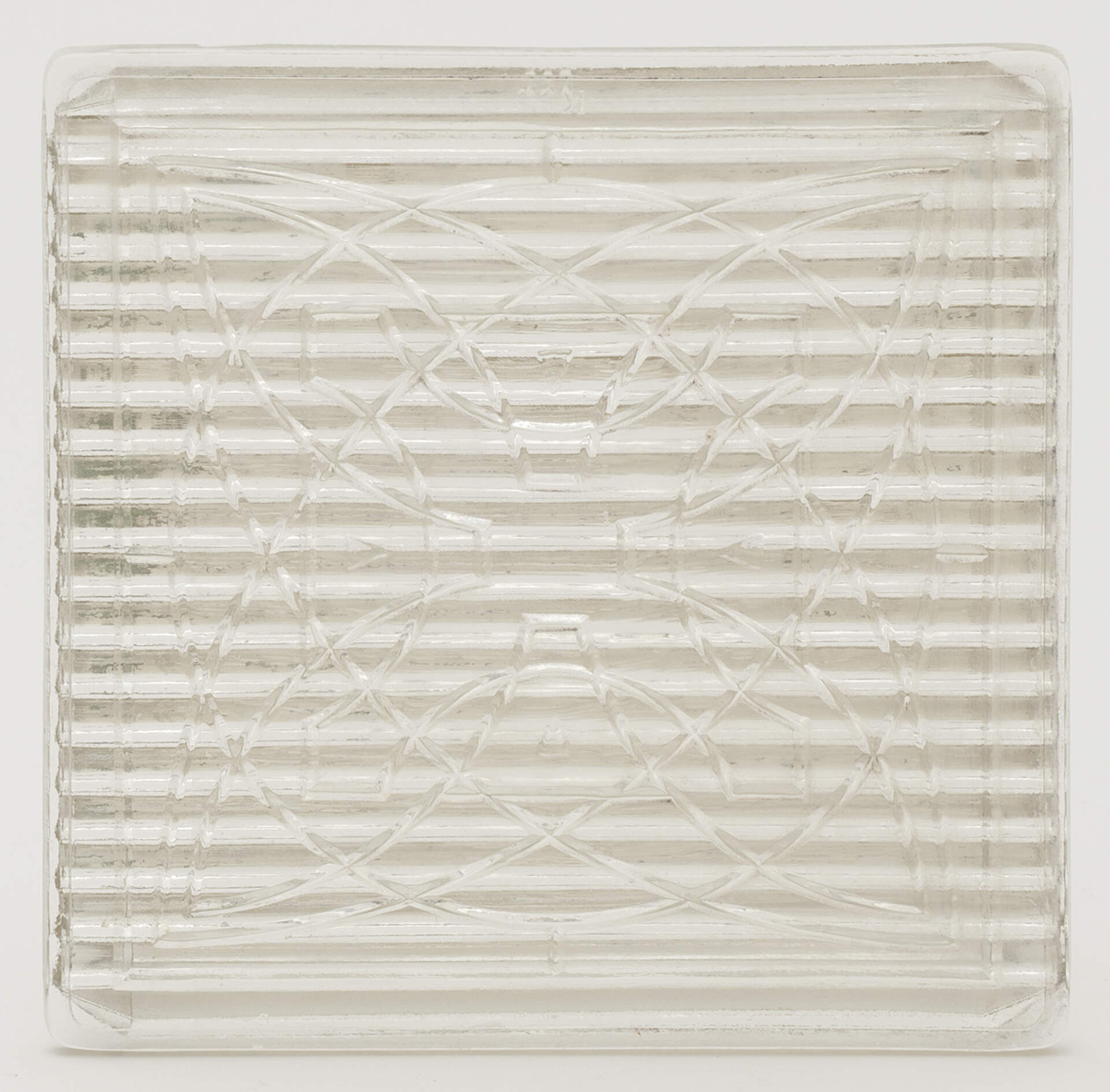Frank Lloyd Wright (1869-1959)“Flower” pattern prism glass
patented December 7, 1897
clear glass tile
4 x 4 x 3/8 inches
Gift of Scott Goldman D.M.D. and Nancy Brock
For information about Frank Lloyd Wright’s design for the Luxfer Prism Company, go to http://gowright.org/research/collections/collection-highlights/architectural-elements/luxfer-prism.html where you will also see an illustration of the glass tile. They published this information about it:
In late 1897, Frank Lloyd Wright designed and patented a series of prism lights and plates for the American Luxfer Prism Company. The company was founded by a group of Chicago men, including two of Wright’s early clients, William H. Winslow and Edward C. Waller. Luxfer prisms were created to increase the amount of natural light that could be directed into a room and were used most often in industrial buildings. The prisms were set into the upper registers of window openings and arranged 5 to 15 units high and 20 units wide. Luxfer prism plates redirected light into an interior by refracting the light further into a room and opening up the space.
A Luxfer prism is a 4 in. square sheet of glass with prism on the interior side about 3/16 in. thick, with a 1/8 in. projection. The exterior side of the plate is usually flat. The prism lights in the FLWPT collection, patented on October 4, 1897, are comprised of a design based on a flower composed of circles and squares, and lavender in color. The prisms Wright designed for the American Luxfer Prism Company were a source of additional income for him at the same time that they allowed him the opportunity to experiment with new ideas and building materials.
